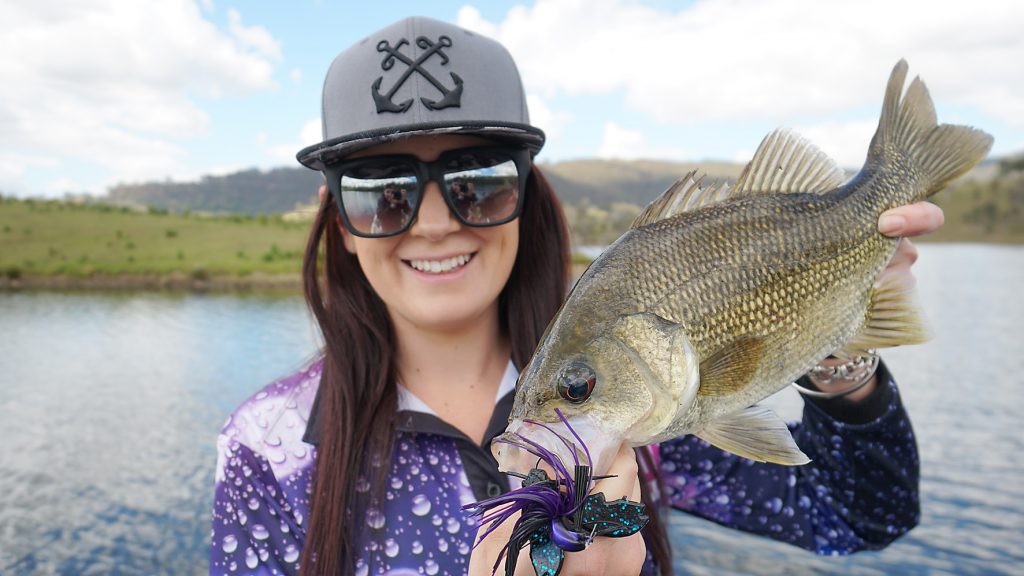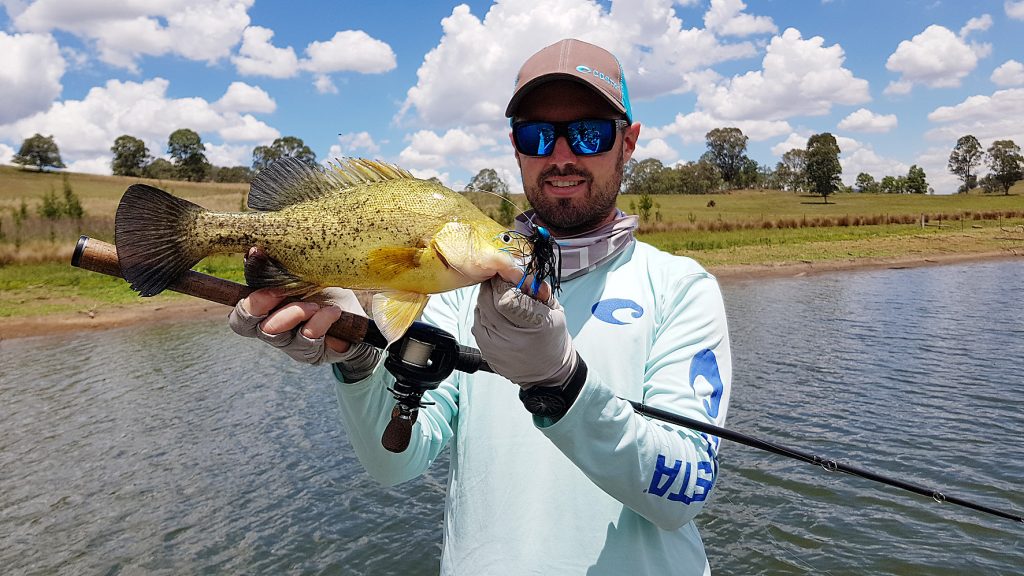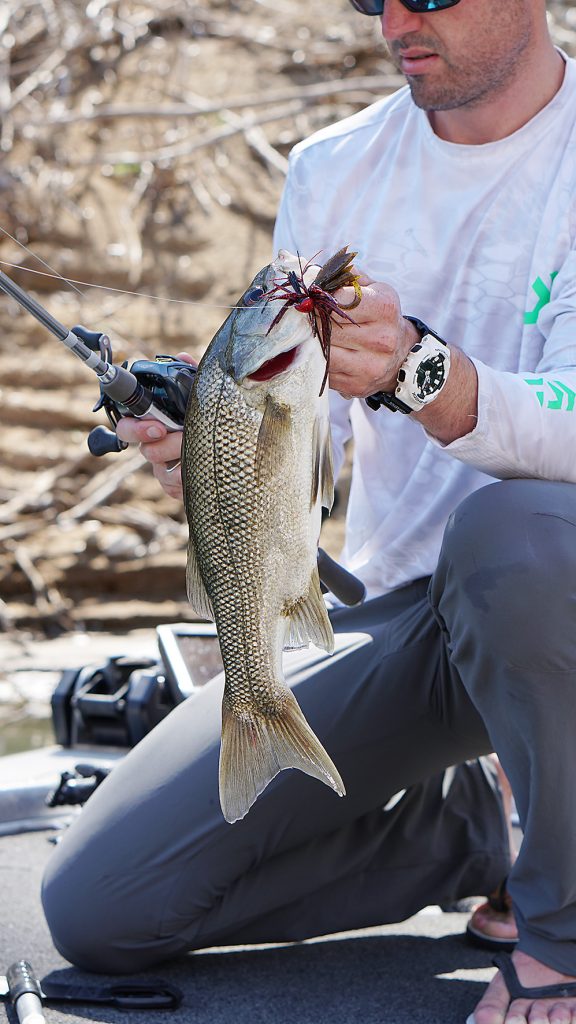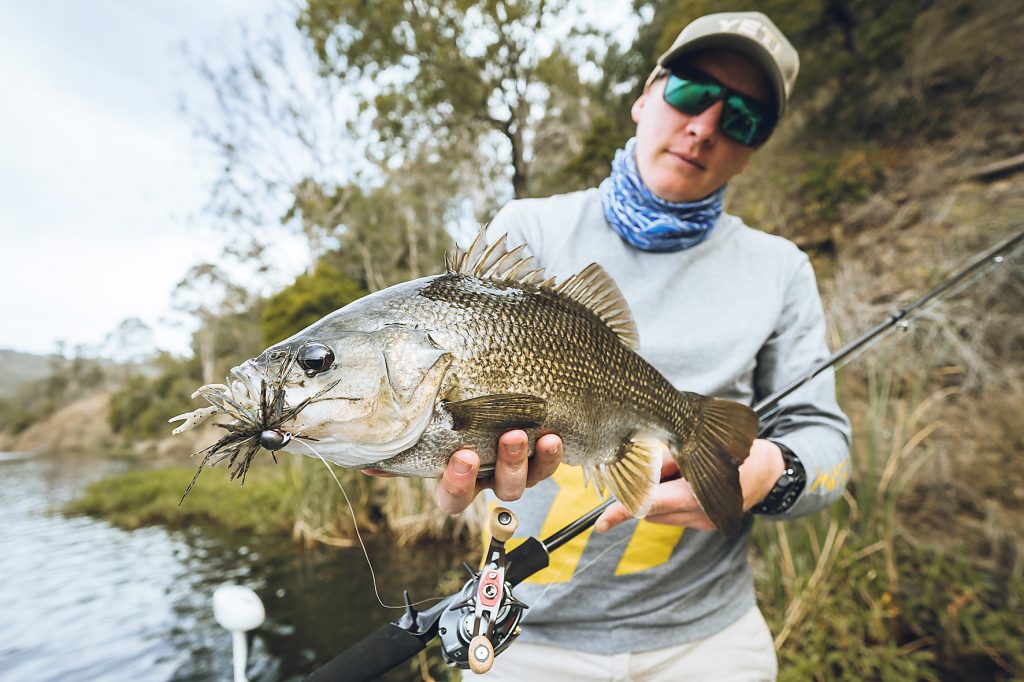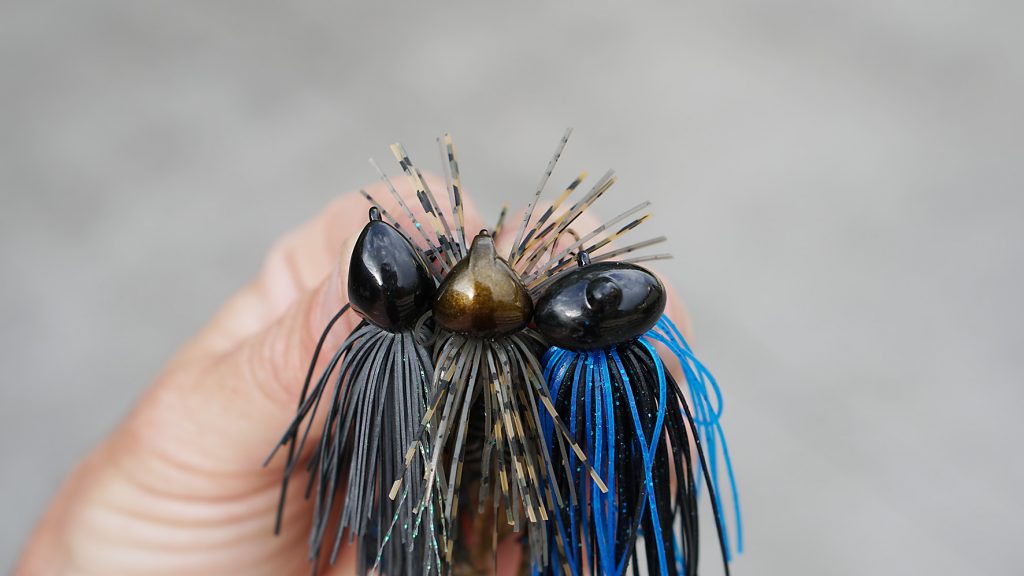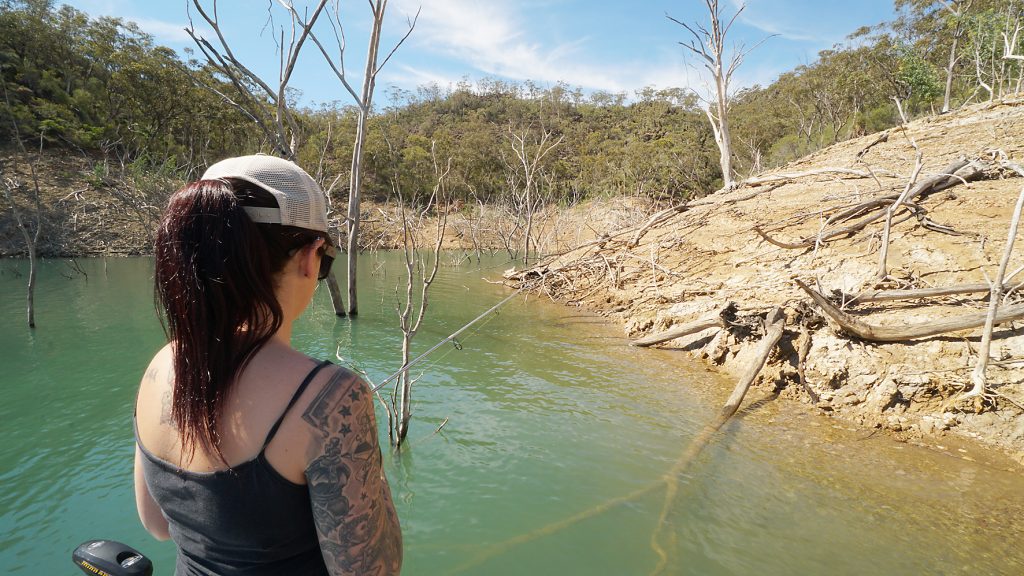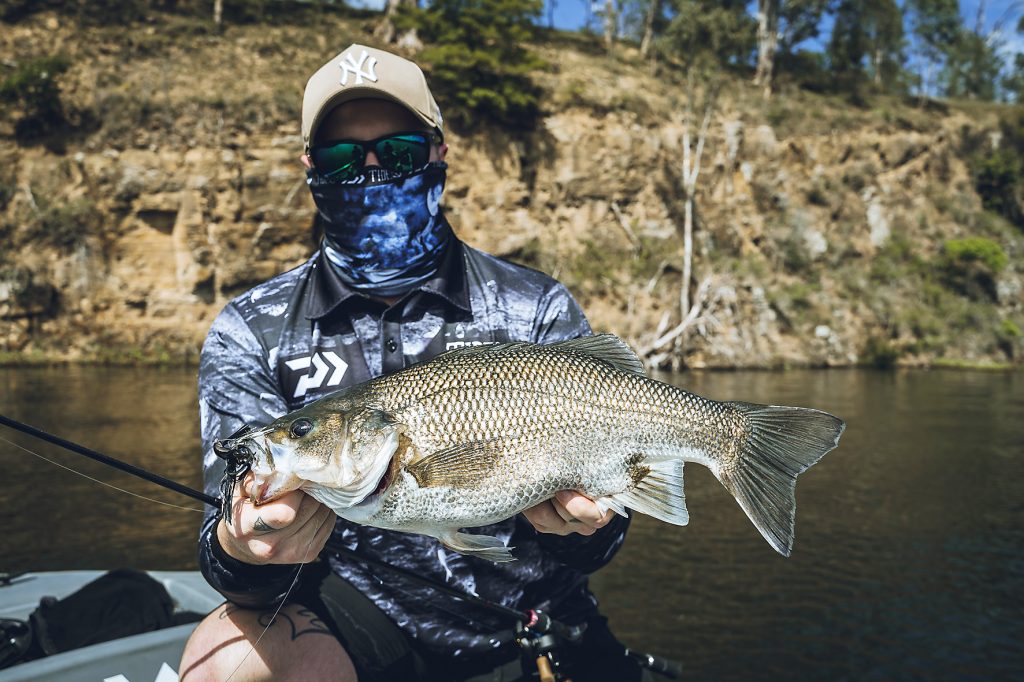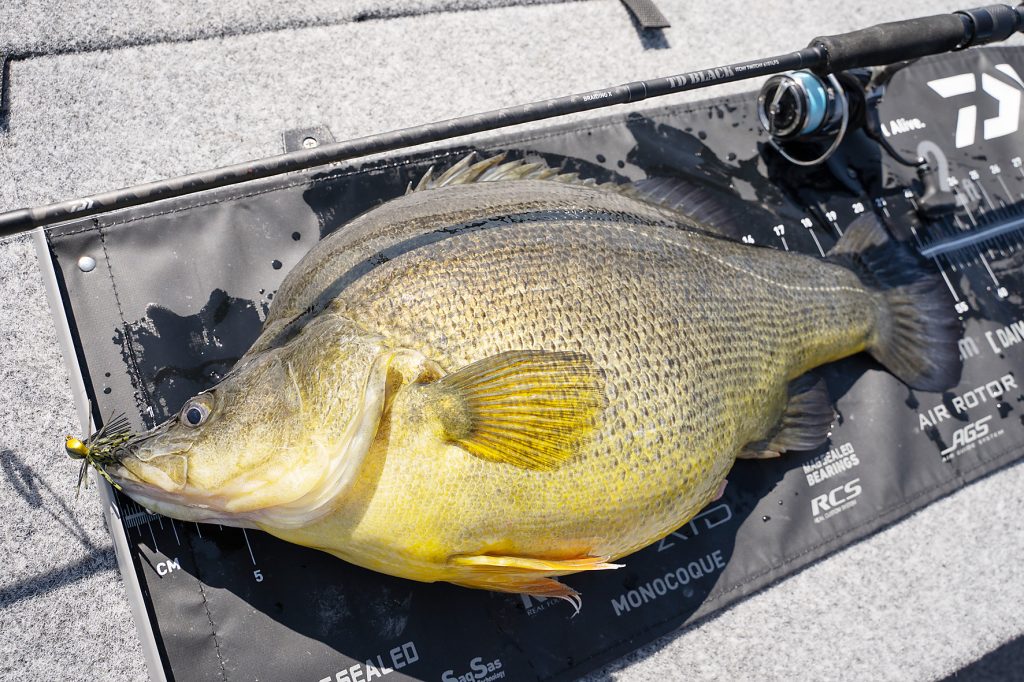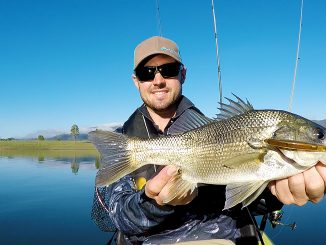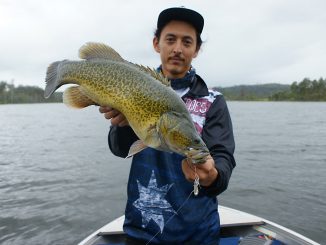
by Peter Phelps •
You may have heard whispers along the fishing grape vine of a new kid on the block for freshwater fishing. The skirted jig has exploded onto Australian bass fishing in recent years. A staple of the American fishing scene for a very long time now, savvy Australian tournaments anglers pushing themselves to have an advantage over fellow competitors have discovered a reliable technique that seems to have the capabilities of catching fish when others fail. While designed with bass in mind, you will be surprised on how many species will fancy themselves a feed of skirted jig.
For those who are not familiar with the technique, a skirted jig is as simple as its name sounds. Typically, a silicone skirt attached to a jighead with a weed guard. They come in hundreds of different variations from shapes, sizes, weights, hooks, colours the list goes on.
Originally used to imitate a crawfish, yabby or crustacean on the bottom, a skirted jig may be applied to several different techniques. From dragging them along the bottom to skipping them up under over hanging cover and swimming them higher in the water column, the options with them are endless. As Australians, we have only just started to scratch the surface on how to use them and what species will activity eat them. Every fish at some point loves to feed on the bottom, and I believe would not shy away from a well-presented skirted jig.
Choosing a jig
Choosing the right jig for yourself can be kept fairly simple. First comes choosing the right hook size for the fish you are targeting. For bass I run a jig with a 2/0-3/0 size hook. You can up the hook size and thickness if you wanted to target larger species like cod, barramundi or saltwater species like snapper.
Next is the type of cover you are fishing. There are several styles of skirted jig that are better suited for each type of cover.
The football jig is shaped exactly as it sounds – two rounded cones meeting in the middle of the hook eye. This keeps the jig upright easily. These jigs are typically heavier and better suited for deeper water. The football head shape frequently gets wedged in branches of trees, so rock, sand and muddy bottom is ideal for this jig.
A cone style shaped head is better suited for weed and timber. This shaped head comes over branches and through weed better than a football head shape.
Next is the weight of the jig you need. Generally, a weight that is comfortable to keep the jig on the bottom without it plummeting to the bottom is desired. As a rule of thumb, 1/4oz for 0-10ft, 3/8oz for 0-15ft, 1/2oz for 10-20ft and 5/8oz and heavier for 20ft plus. These weights would obviously change due to any current present and plastic trailer used. Trailers with lots of action with the skirt size and thickness can slow down the fall of jig.
The thing that makes the skirted jig so different to other techniques is its weedless and snagless capability. This allows you to put the jig into the thickest cover with ease and keep it there, right in front of the fishes’ nose. Unlike a moving bait that requires the lure to be moving through the water column to get bites, a jig sitting motionless or moved very slowly, and seems to produce when other lures fail.
Working your jig
When it comes to retrieves I like to keep it all simple. On a cast tight to the cover, let the jig fall under a semi slack line. Keeping some sort of contact or awareness of you jig is important on these casts, as the jig typically can gets eaten on the drop.
When trying to mimic a crawfish, I let the jig fall straight down to the bottom. I let is rest for a moment then try and focus on slowly dragging or inching the jig forward with the rod and winding the slack line up, while getting a feeling for everything under the water.
You will be surprised by what you can feel through the line. Rock, gravel or branches each have a certain sensation. Knowing what the jig feels like on the end of your line is the most important thing about fishing a jig.
When it comes to catching and striking on fish, you must know exactly when a fish has it in its mouth. Jig bites can be different from fish to fish. Some may slam it that hard you cannot help but hook it, while others you may not even feel a bite, you just lose contact with your jig and cannot feel any weight at all. This is when a fish has picked up your jig and swam away with it. Knowing when to strike is the hardest thing to pick up when fishing a jig.
Set up
Having the correct rod and reel set up is important to make sure you maximise the action of the jig. I use baitcasters for all my skirted jig fishing, but only because I am more accurate with a baitcaster.
Modern day spinning outfits are more than capable of handling skirted jig fishing as well. Spin rods are well suited for deep water when loaded with thin braid to help cut through the water. I feel a 7’-7’3” length rod is ideal. This length gives you ample leverage when striking on fish to push down the fibre weed guard and hook the fish.
The rods action or taper is the very important. Being a single hook with a fibre weed guard, you need the strength and back bone in the rod to be able to hook fish properly. For this job, a fast action rod is ideal. A regular or slow tapering rod is too soft, and you ill tend to lose fish easily after not getting a solid enough hook-up.
An extra fast taper is nice to fish with, but I feel they can be a little too soft in the tip. When fishing around weed or trying to inch a jig over timber ever so slowly, an extra fast rod’s tip can load up. The amount of force required to free the jig can have suddenly spring forward and shoot the jig away from the strike zone.
Reel size and speed is the next thing. Fishing a jig along the bottom is done with the rod. The reel is only used for winding up slack or a fish in. For a baitcaster I would suggest a speed no slower than a 7:1 speed. In a spinning reel, a 3000 size or bigger is ideal. The speed is needed to be able to catch up with fish that have picked up your jig and swam away. You will be surprised how far a fish can move in the second it takes to realise a fish has your jig. High-speed reels allow you to lower the rod tip wind up the slack and strike in one quick motion.
Line size will depend on the fish of size you are chasing and the cover or structure that is around. Braid with a leader is an ideal set up. The low stretch of the braid gives all the feel you need when dragging the jig along the bottom. A long leader length or 6ft plus is needed as well to act as a shock absorber. When striking on a fish it should be quick and sharp to push the weed guard down. The longer leader results in less lost fish by adding that little bit of cushion to prevent you line snapping from a chaffed leader, knot slipping or gear failure. In the freshwater I will use no lighter than 12lb leader around timber or 10lb around weed, because of the distance covered by the fish before you strike and how tight in amongst the cover you are fishing.
To complement your jig, I suggest a plastic trailer to give the jig more action, a profile and something for the fish to bite down onto. The plastic feels realistic and will bring them back for more than one inquiry. I keep my colour selections basic from browns, greens to black, I don’t really stray too far from these, and it’s the same for the trailer. Don’t get stressed about colours too much, it’s more about what you are doing with the jig than the colour. The plastic trailer options are limitless. Craw trailers are good to imitate a yabby, stickbaits or grub for a shrimp, and a paddle-tail for a baitfish. There could be a whole other article or even book on what trailers to use for different scenarios. Sticking to a craw trailer and trying to imitate a crawfish or crab will be the safest bet. Catching a few fish this way will build your confidence to start experimenting. The plastic trailer can be scented or have scent applied to give them extra appeal when sitting on the bottom as well. I feel this really helps if the bites are a little tough to come by.
Set the hook!
These tips will hopefully give you the building blocks to start you out in the right direction. I honestly believe there is a time a place that most species will eat a skirted jig. From a tiny finesse jig for finicky bream holding tight in amongst a snag, to a heavy football jig dragged over a deep gravel patch for snapper and flathead.
Keep an eye out in the upcoming Tournament Angler Guide included in the February edition of Fishing Monthly as I take you further in depth on specifically catching bass on skirted jigs!


